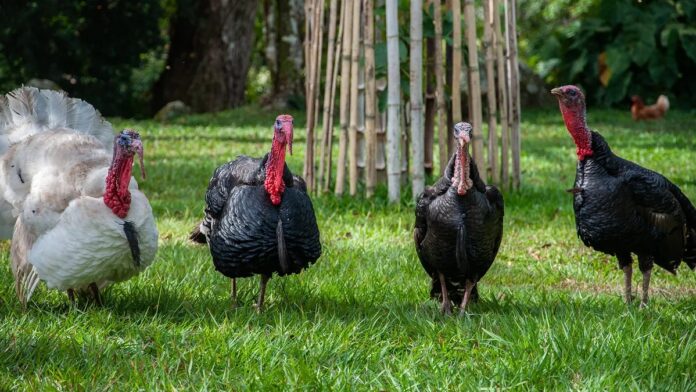Have you ever noticed a cluster of turkeys wandering through a field and wondered what collective term applies to these birds? While you might instinctively think “flock” or something similar, the official answer is surprisingly unique: a group of turkeys is called a rafter.
Зміст
The Uncommon Term: “Rafter” Explained
This designation isn’t a recent invention. The term “rafter” has been used to describe a group of turkeys for centuries, dating back to at least the 16th century. While it’s becoming less common and often superseded by the more general term “flock,” “rafter” remains the established and formally recognized collective noun.
The word’s connection to its meaning is interesting. “Rafter” isn’t merely a random label; it stems from an older use of the word indicating a grouping or arrangement – fitting for a gathering of these birds, whether they’re wild or domesticated.
Wild vs. Domesticated Turkeys: Distinct Groups
Turkeys exist in two primary forms:
- Wild Turkeys: These birds inhabit forests and open areas, particularly in regions like Missouri. They are known for their speed, ability to fly short distances, and sharp instincts when facing predators.
- Domesticated Turkeys: Bred on farms, these turkeys are typically larger and often unable to fly. They’re raised in specialized environments, including barns equipped with technologies and services designed for large-scale breeding, hatching, and safety.
From Poults to Hens: Understanding Turkey Life Stages
Here’s a quick guide to understanding the terminology related to turkeys:
- Poults: Refers to young turkeys.
- Hens: The term for female turkeys. They typically lay eggs during the spring season.
- Commercial Turkeys: Predominantly raised in the U.S. for food, particularly around Thanksgiving.
A National Bird That Wasn’t: Benjamin Franklin’s Preference
It’s a popular misconception that turkeys almost became the U.S. national bird. While it’s true that Benjamin Franklin once expressed a preference for the wild turkey over the bald eagle, describing turkeys as “a much more respectable bird” and “a true original native of America,” this didn’t translate into a serious bid for national avian status.
Turkeys in Culture, Economy, and Beyond
Turkeys have held significance in both European and American cultures, economies, and cuisine for centuries. Beyond their culinary value, they offer a wealth of fascinating details regarding their feathers, unique sounds, and interesting behaviors, which are often highlighted by farmers, nature enthusiasts, and even popular social media accounts.
The Poetic World of Collective Bird Names
Collective names for bird groups are often evocative and poetic. Consider these examples:
- A group of geese on the ground is called a gaggle, while in flight, it’s a skein.
- Crows form a murder.
- Owls gather in a parliament.
In comparison, “rafter” might seem less lyrical, but it holds the same level of official recognition.
So, the next time you observe a group of turkeys, whether they are roaming free or residing on a farm, you can confidently call them a rafter.
This unique collective noun is a testament to the fascinating world of language and avian terminology


























